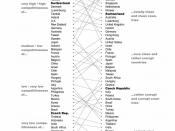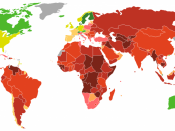Corruption has become endemic in China, especially during the 1980s and the 1990s. From an estimated 20,000 cases of corruption under investigation in the early 1980s, it has gone up to more than 50,000 in 1995. In 1996, China was ranked by the Transparency International and Gottingen University 50th out of 54 countries from the most clean to the most corrupt. Only Bangladesh, Kenya, Pakistan, and Nigeria were deemed more corrupt than China. With these astounding data, there is no arguing that corruption has definitely become a big issue in China. Before delving into the political condition in China, it is essential to first understand the dynamics of corruption
Integrated Model of Corruption
Structuring an environment where officials do not use their discretionary power for personal gain is an inherent public administration issue. Previous studies on corruption tend to examine micro or macro approaches in isolation. Some theorists focus on the macro political and social forces that cause corruption, without considering the micro situations that may be structured in a way that encourage subversion of the law; on the other hand, other experts stress the micro circumstances while ignoring their relations with the surrounding economic and political context.
In reality, macro and micro situations collaborate in influencing corruption in any given country.
Micro Approach
Corruption as a form of criminal behavior can be understood by referring to some general model of crime. The "deterrence hypothesis" of rational choice theory, Piliavin et al. constructed a model which hypothesized: (1) perception of higher risk of formal and personal sanctions will reduce the likelihood of crime; (2) persons who feel they can earn more money illegally than legally are more likely to succumb to criminal temptations; (3) persons who perceive more opportunities for crime should have greater objective opportunities and lower opportunity costs...


